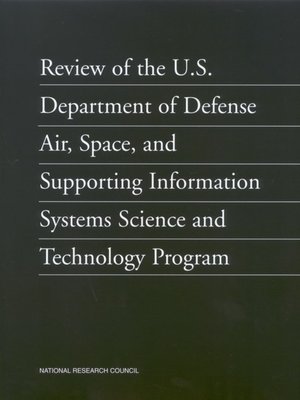Review of the U.S. Department of Defense Air, Space, and Supporting Information Systems Science and Technology Program
ebook
By National Research Council

Sign up to save your library
With an OverDrive account, you can save your favorite libraries for at-a-glance information about availability. Find out more about OverDrive accounts.
Find this title in Libby, the library reading app by OverDrive.



Search for a digital library with this title
Title found at these libraries:
| Loading... |
<p>Since the mid-1940s, when Vannevar Bush and Theodore von Karman wrote Science, the Endless Frontier and Toward New Horizons, respectively, there has been a consensus that strong Department of Defense support of science and technology (S&T) is important to the security of the United States. During the Cold War, as it faced technologically capable adversaries whose forces potentially outnumbered U.S. forces, the United States relied on a strong defense S&T program to support the development of technologically superior weapons and systems that would enable it to prevail in the event of conflict. Since the end of the Cold War, the United States has relied on its technological superiority to maintain a military advantage while at the same time reducing the size of its forces. Over the past half-century, creating and maintaining a technologically superior military capability have become fundamental to U.S. national security strategy, and investment in S&T has become a basic component of the defense budget.</p>
<p>In late 1998, Congress asked the Secretary of Defense to conduct a study, in cooperation with the National Research Council (NRC), on the S&T base of the U.S. Department of Defense (DoD). Congress was particularly concerned about areas of the S&T program related to air systems, space systems, and supporting information systems. Its concern was based on the Air Force's reduction of its S&T program from the largest of the three military service programs to the smallest. Congress also wanted to ensure that the Air Force maintained an appropriately sized S&T workforce. In late 1999, the Deputy Under Secretary of Defense for Science and Technology asked the NRC to conduct a study to explore these issues.</p>






